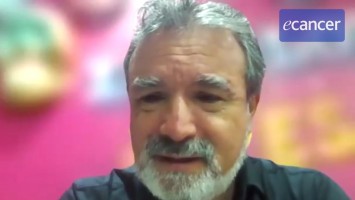PARP inhibitors are here to stay now in metastatic breast cancer, maybe eventually also in early breast cancer depending on the OlympiA study which hasn’t read out yet. But in metastatic we now have approval in Europe for olaparib and in the US for olaparib and talazoparib. So now it’s time that we changed the way that we practise and incorporate them and that’s not very easy because it’s only probably about 5% of the unselected population in luminal as well as triple negative breast cancer that do have a mutation and we have to basically screen everybody now for a germline BRCA mutation in the metastatic setting and ideally before we start any therapy in the metastatic setting. Then to incorporate PARP inhibitors in those patients that do carry a germline BRCA mutation.
Is there anything being done to overcome the issue of PARP inhibitor resistance?
I don’t think we’re there yet. The major clinical objective is now since we only have had approval in Europe for two months basically is to change the way we practise, assess germline BRCA status and then treat those patients. It’s going to be very difficult to sequence because in luminal breast cancer obviously we have CDK4/6 inhibitors so probably PARP is going to be after CDK4/6. In triple negative we also have with the atezolizumab data now good options for patients with PD-L1 immune cell positivity. So sequencing is important and then we can see what we do afterwards. I think research will be going on there in order to see how we can optimally use the PARP inhibitors. There are some very interesting early data on combining immune therapy with PARP inhibitors but we also know that either substance, be it the PD-1/PD-L1 targeted agent or the PARP inhibitor given first, will sensitise the tumours for the other. So there’s a lot of exciting data out there.








